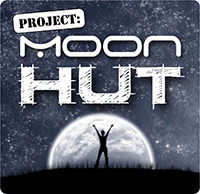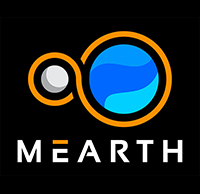

Project Moon Hut Paper #3
Innovation Acceleration and the Opportunity Cost of Inefficient Markets
Markets in product innovation are inherently inefficient. It is very difficult to tell which projects will succeed or which will fail because the returns from innovation are highly non-linear; as a result, decision makers will always find it is impossible to efficiently allocate capital to those projects that will generate the best return. By the same measure, any marginal increase in the efficiency of these markets will generate a disproportional increase in returns—innovation usually creates positive externalities by catalyzing subsequent innovation. This is an obvious point of concern for Project Moon Hut, which sees targeted innovation in certain activities as the primary engine for increasing social good. How, then, can it increase the efficiency of innovation markets in the Beyond-Earth and Earth’s Ecosystems?
If the cost of failure is not too high, one obvious way is simply to increase the speed of product and service development. In an iterative process such as innovation, previous failure can be an asset which provides information about what doesn’t work as well as what might work—this is the logic implicit in the Silicon Valley dictum “fail early, fail often.” The software industry has absorbed this lesson in its development cycle and its funding model to spectacular effect. The more capital-intensive an industry is, the more expensive failure becomes; but even there, because the returns from any improvement are non-linear, any organization that can manage the cost of the failures would benefit disproportionately from increasing the speed of failure.
Another challenge with accelerating innovation in the Beyond-Earth Ecosystem is the thinness of networks. Innovators benefit from the network effects, nested systems, interdependences, not just of knowing other innovators, but also from having contacts within and external to their established industry. This is important for keeping up to speed with the state of the art in the industry, being able to grasp potential industry demand, and having access to manufacturing and other resources to bring new products to market. External contacts are even more important because 1) industries often become myopic and don’t see the opportunities right in front of them, 2) because “outsiders” bring new models, techniques, talent, etc. to the conversation, 3) our industries and education have become so specialized that cross pollination of ideation and skills create an exponential opportunity for rapid and diverse ideation.
This brings with it related challenges:
- Beyond-Earth is at the bleeding edge of all kinds of human innovation, and the bleeding edge is by definition sparsely populated. This not only means that innovators have fewer partners to connect with, but it is even harder to find those other innovators.
- Those within the ecosystem place themselves in a silo of uniqueness believing that their ideas are so advanced, their work unique, their mission terribly valuable that they create their own language, structure, beliefs, that limit their explosive opportunities.
- The Beyond-Earth Ecosystem is not very well defined. Although there are over 130rocket-launch and thousands of satellite-manufacturing companies (over 447 in the US in 2023), there is no true “space” industry: every enterprise that engages in beyond-Earth activities piggybacks on existing Earth-centric manufacturing infrastructure. A particular example helps illustrate this. A team of four graduate students tried to build a satellite for a research project. For this, they needed a very specific part, which they were not able to find commercially available anywhere. It took them a full year before they were able to locate an adequate part, during which their project could not advance. This particular example illustrates the problem of connecting with established industries, but it could just as easily be a problem of innovating a new process, finding talent, securing assess to alliances, etc. that would require contact with other organizations.
These bottlenecks may stymie the natural process of research and development. This in turn brings other potential challenges to the innovation pipeline inclusive of opportunity cost. Longer project times and a lower volume of feedback from successes or failures on average bring a lower return on initial investment; this makes it harder to raise capital for future projects, slowing down the innovative cycle still further.
One solution proposed by Project Moon Hut is MearthLink, a platform designed to connect all players working directly, indirectly, adjacent, and outside the Beyond-Earth ecosystem. The intent is to break down the silos which currently constitute the “space industry”, creating a sufficient density of connections among the various players such that a new ecosystem is created combining the Beyond-Earth innovation ecosystem and an even more expansive innovation ecosystem organically emerges. How should we evaluate this?
There are a few basic criteria that might be used to measure the success of the project:
1. The ability of innovators [organizations and individuals] to
- find other innovations internal or external to their specialties
- secure capital, talent, media, research at 100x traditional means
- find products, services and experiences they need across industries to accelerate their own or other’s development pipeline
- participants to generate an increased speed of research, its dissemination, and as a result its iterations of product
- the expanded talent pool over time to fill vacant positions with cross interdisciplinary skills
2. The ability of sellers to
- determine cross-market demand signals, driving their own product development
- discover new markets that are not currently visible especially in adjacent or new industry categories
- identify targeted unserviced and under serviced opportunities that could not be seen without the platform
- pivot quickly to create new demand in markets
3. The ability of purchasers to
- recognize alliances in atypical forms
- participate in collective purchasing opportunities
- revise quickly market demands
- optimize their capital allocation with decreased costs or improved products and services
4. The ability organizations to
- expand the opportunity to use data to make projections
- acquire capital faster due to increased visibility and viability
- participate in an expanding ecosystem
- recognize new players early and often from talent to sellers to purchasers
The feedback loop established between individual buyers and sellers is critical for success, meaning the network cannot be structured as a centralized seller’s hub, like Amazon. So too are the lateral connections among similar players, meaning even a more decentralized marketplace like Alibaba would not suffice.
The comparison can instead be made to Stanford University’s role as a facilitator for the development of Silicon Valley. The links it began forging with the industry after World War II helped foster an ecosystem that connected innovators, manufacturers, and capital. It has been estimated that Stanford graduate entrepreneurs alone have generated $2.7 trillion in revenue and created 5.4 million jobs.
Unlike Silicon Valley, MearthLink is not a single geographic hub, but aims to identify, incubate, and accelerate an entire global ecosystem. This leaves us with several valuable questions going forward. What is the most efficient way to create connections between industries that are geographically centered? How do we identify tech workers and potential entrepreneurs early on? What is the most valuable way of connecting them to industry? How can we use this network to provide information that is useful to potential investors? What mechanisms would facilitate and expanded and engaged ecosystem? What levers are necessary to create accelerated engagement globally? What tools do organizations large and small need to generate faster momentum? How to engage governance models into the design? What educational changes must be introduced to generate a pipeline of talent? What ecosystems are throttling back innovation and therefore need incentives to improve the whole ecosystem? These are just some of the questions that will help inform the development of MearthLink and make it valuable for all participants.